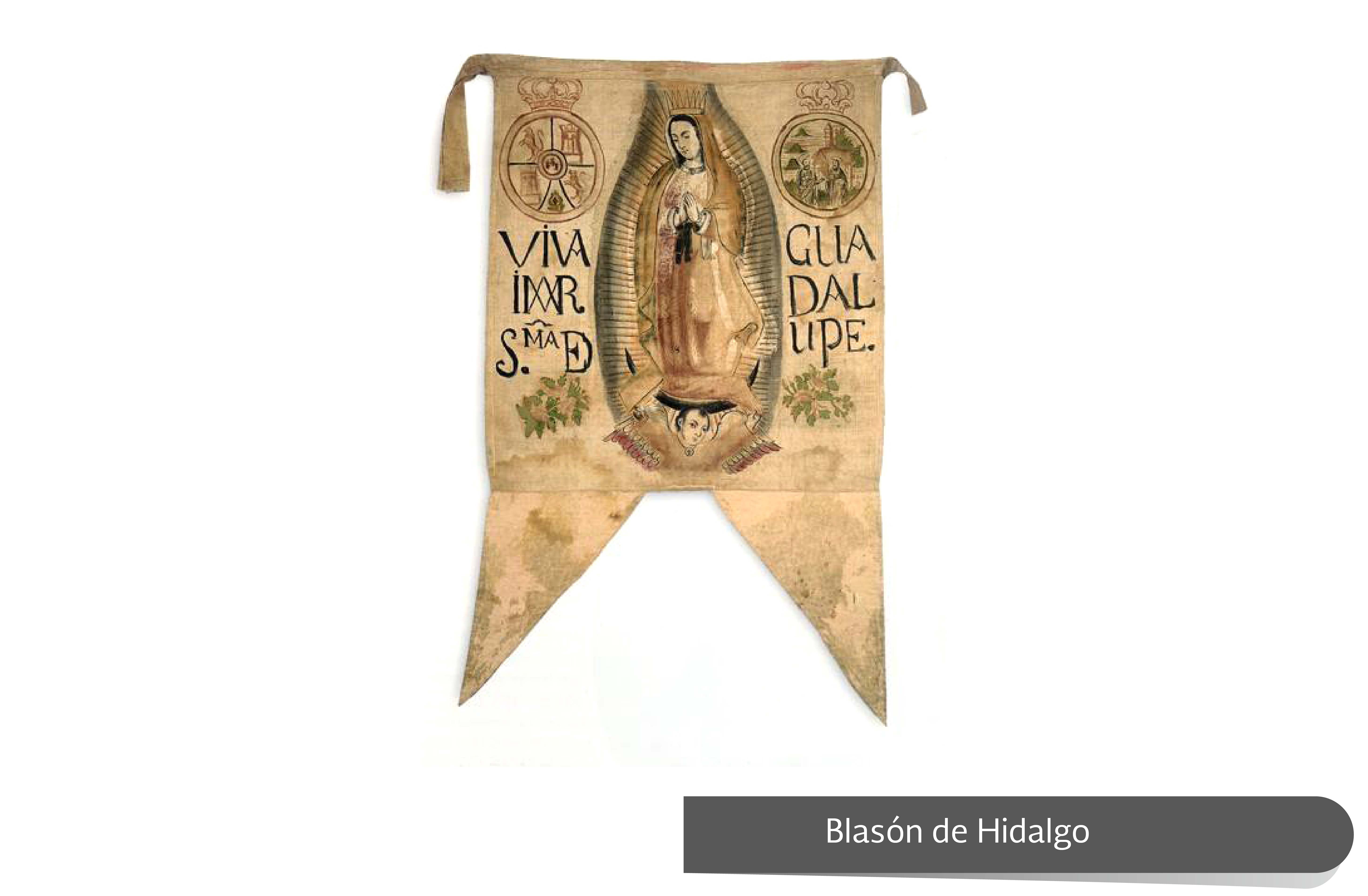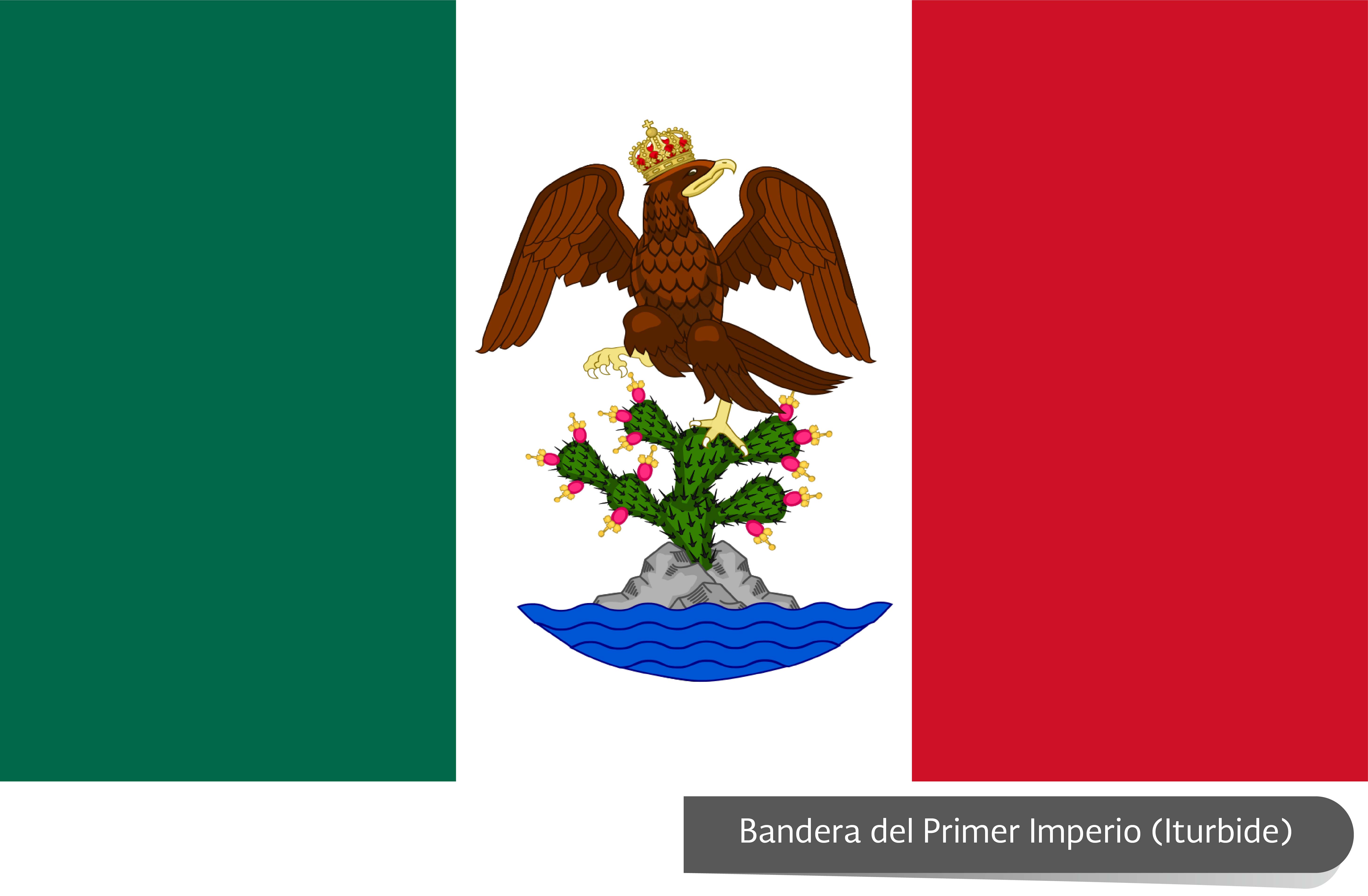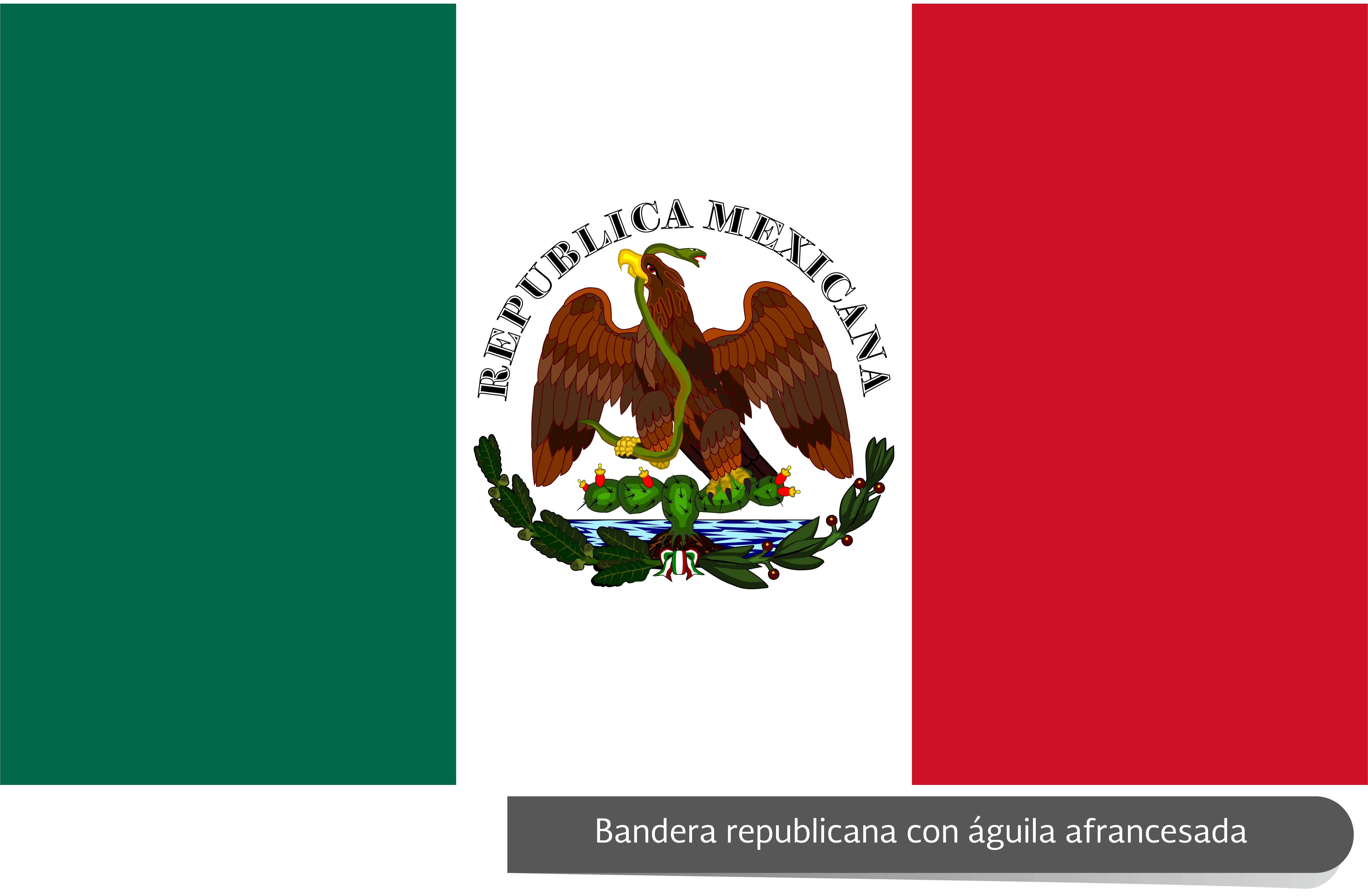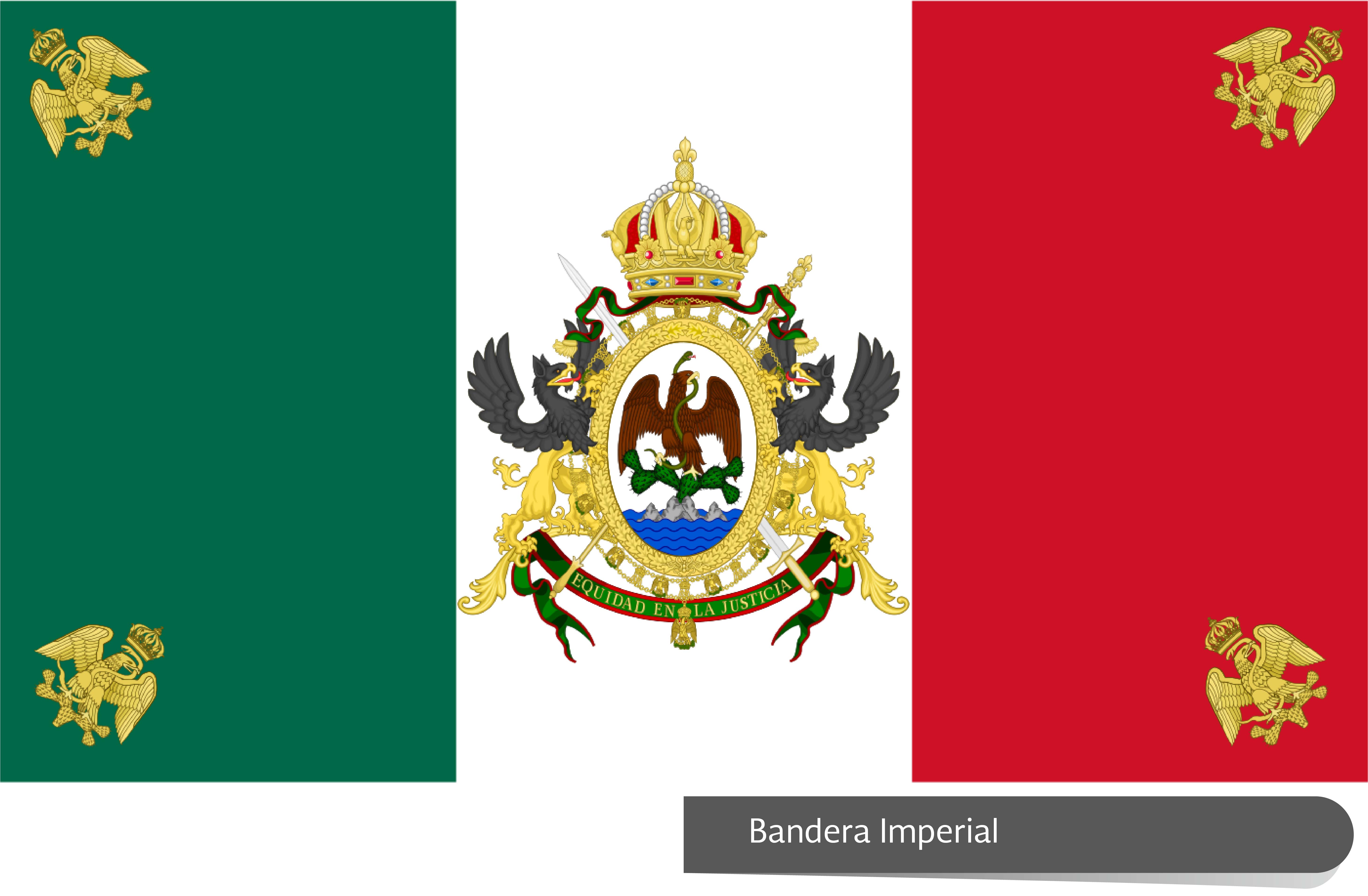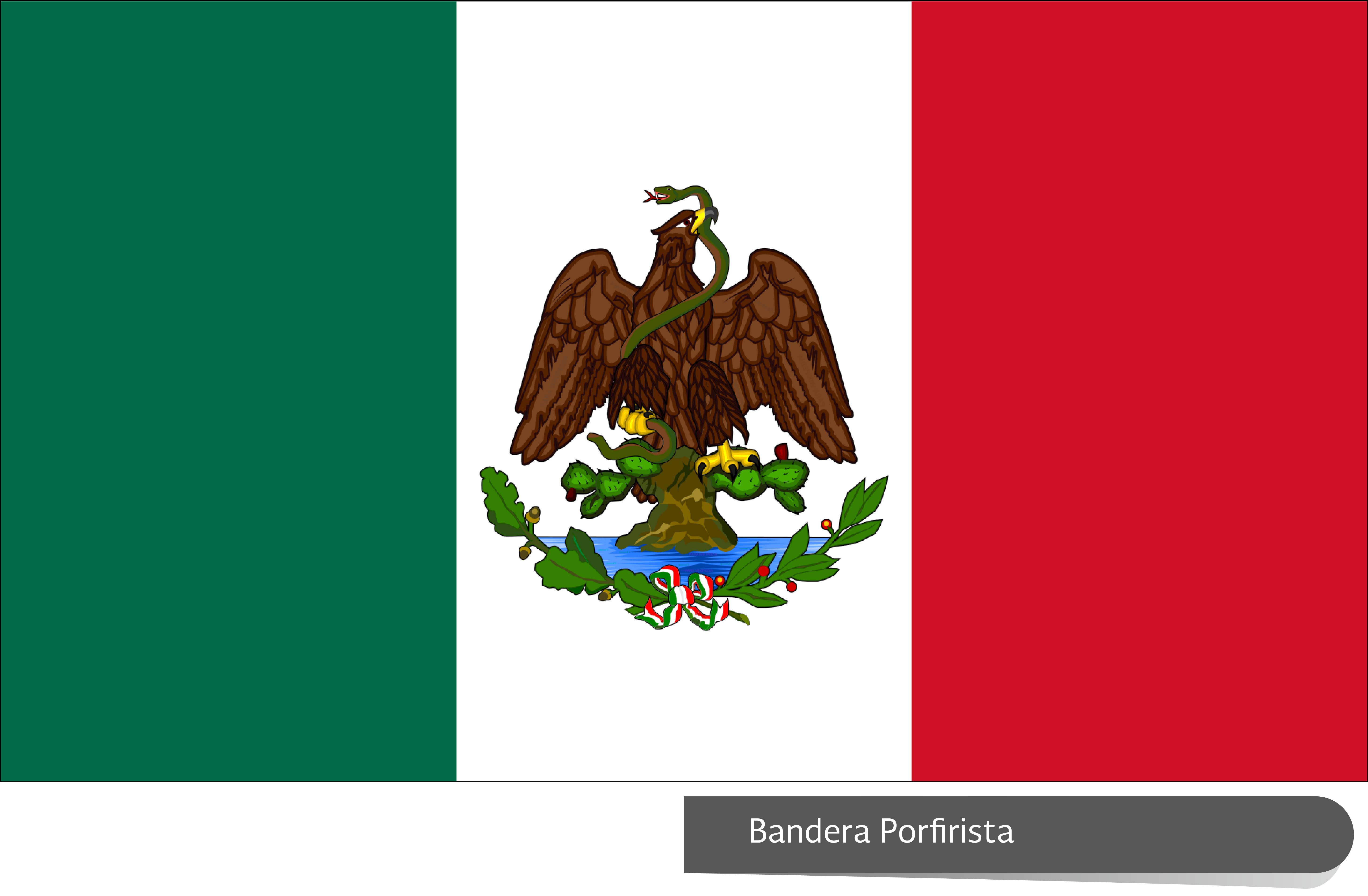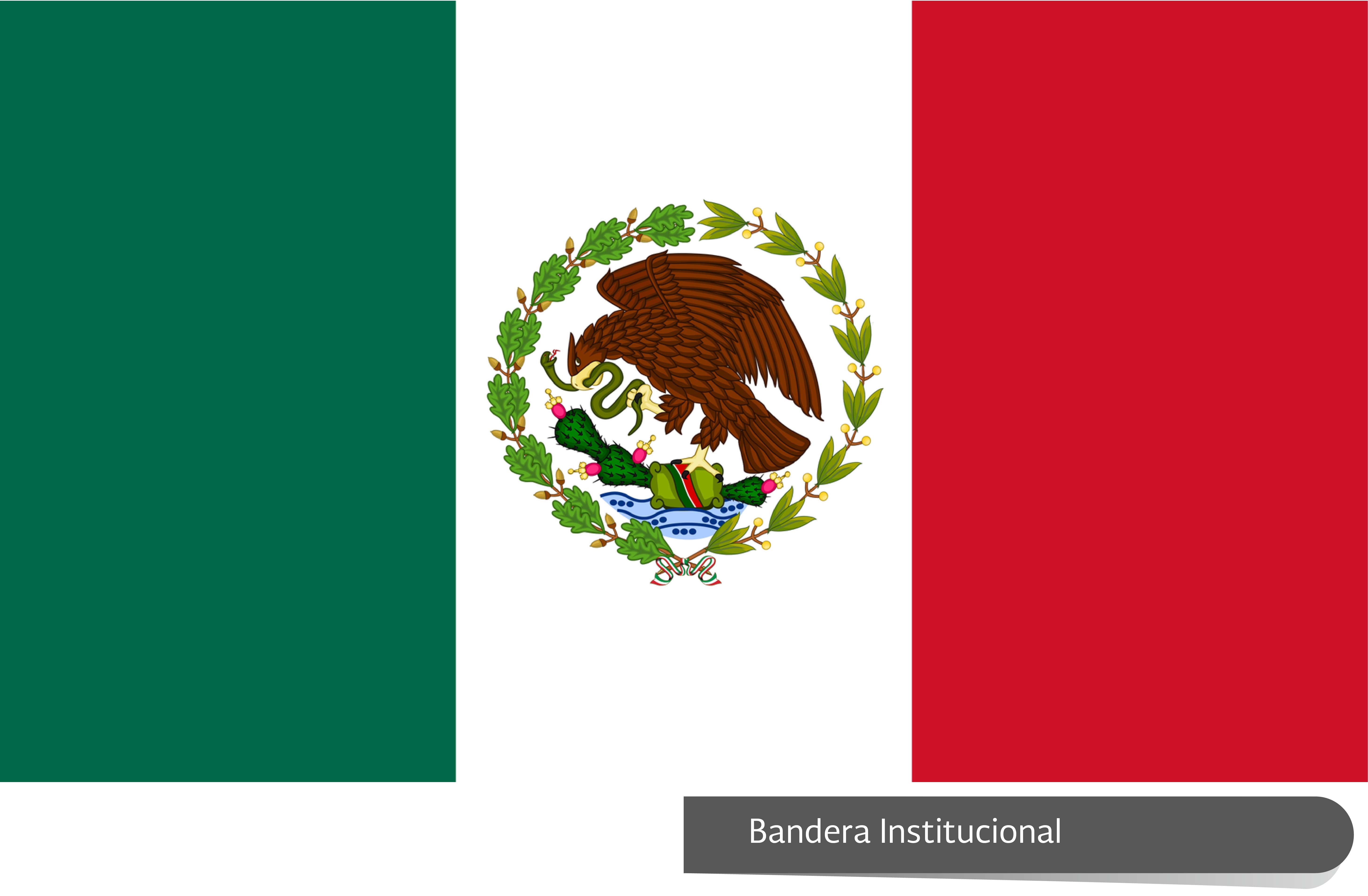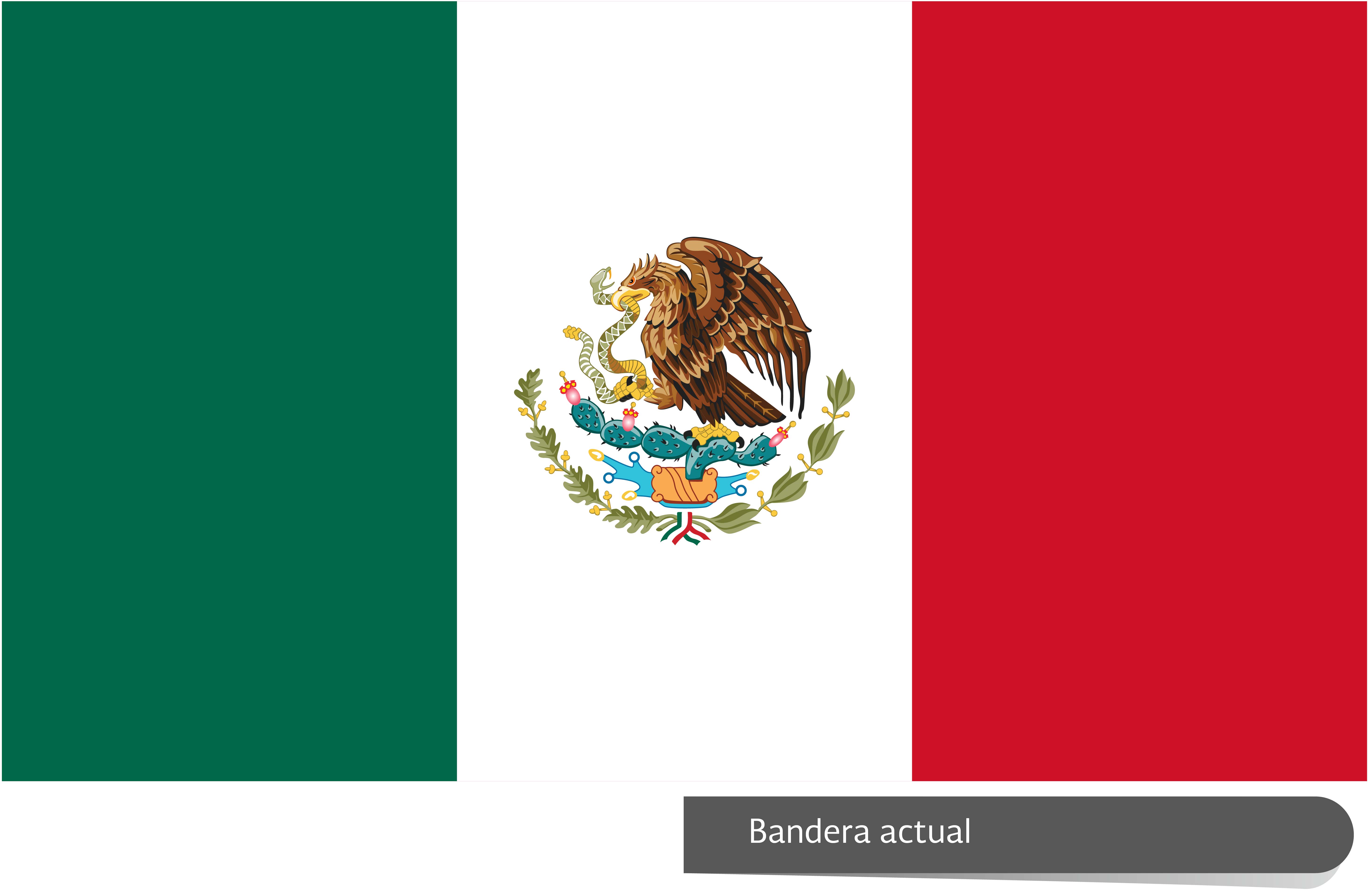While is true that Mexico has never ceased to have a patriOr, the story behind it is very interesting, since there is talk of 4 official flags, with the same number of changes, but 13 are also counted as official, from the banner of the priest Miguel Hidalgo.
The first official flag of Mexico emerged in 1823, after the country’s independence from Spain. It was a tricolor flag, with stripes of green, white and red, and in the center was the national coat of arms.
Over the years, the flag has undergone various modifications, but the original colors and the national coat of arms have remained constant as a symbol of the Mexican nation.
the first flag
The first official national flag was conceived by the author of the Mexican Independence, Agustín de Iturbide and made in Iguala by the tailor José Magdaleno Ocampo, in 1821, the first year of recognized sovereignty.
That was where the color design that is still known to this day was born. The then government of the First Mexican Empire chose the tricolor of green, white and red with the national shield in the center.
And by official decree it was indicated that: “The national flag and that of the army will be tricolor, forever adopting the colors green, white and incarnate red, arranged vertically, with a crowned eagle in the center of the white stripe.”
second flag
This was adopted after the establishment of the first federal Republic in 1823. The flag chosen in April of that year had the only difference with its predecessor in the national coat of arms, since it suppressed the crown of the eagle’s head, but added the serpent, a olive branch and laurel, a tradition that is still preserved in the current flag. Its use was interrupted in 1864 due to the dissolution of the Federal Republic.
third flag
The third national flag was that of the Second Mexican Empire. Once again, the color pattern used was the green, white and red tricolor with the national coat of arms charged in the center of the white stripe. However, the biggest change occurred with the insertion of four eagles, each one crowned, they were placed in the corners of the flag.
The design of the shield was ordered by the Emperor Maximilian I of Mexico, it should resemble the French Imperial Shield. The flag stopped being used in 1867, when Maximilian I was dethroned and executed by the federalist army.
The current flag or also called, the fourth flag
On September 16, 1968, it was adopted by decree and was confirmed by law on February 24, 1984. The version used today is an adaptation of the design approved in 1916 by decree of President Venustiano Carranza, where the eagle’s profile was changed from front to left profile.
The official design of the Mexican flag is stipulated in the “Ley Sobre el Escudo, la Bandera y el Anthem Nacional” that dictates the proportions and measurements of how the flag should be.
Curiosities
• The National Shield was originally designed by Antonio Gómez, a resident of the city of Pénjamo in the state of Guanajuato.
• The current design of the shield was created by the architects Francisco Eppens Helguera and Pedro Moctezuma Días Infante, which was presented on February 24, 1969 and approved by President Gustavo Díaz Ordaz.
• The exact official colors of the flag have not yet been defined by Mexican law.
• When the National Shield is reproduced on the back of the National Flag, the Mexican eagle will appear perched on its right claw, holding the curved serpent with its left and its beak.
• As there is no official symbolism of the colors of the flag, political parties and states of the Republic have used the colors of the national flag.
• A common mistake when building the Mexican Flag is produced by taking the Mexican National Shield and putting it in the center of the white stripe of the Italian Flag. Both flags carry similar colors, but the Flag of Mexico uses darker shades of green and red. More important still are the different proportions of length and width in each flag, while the Italian flag maintains a 2:3 aspect ratio, the Mexican Flag has a 4:7 one, which gives it a more elongated appearance.
• In 2008, the Mexican flag won the contest for “The most beautiful flag in the world” with 901,627 points. Second place was obtained by Peru, with 340,901 points.
The shield of the national flag is based on the legend that narrates when Huitzilopochtli prophesied to the Aztecs, during their migration from Aztlán, that they should search a lake for an eagle perched on a cactus with a snake in its claws. Seeing this scene, they founded the city of Tenochtitlán, present-day Mexico City, in that place.
The eagle has been modified seven times throughout history until it was consolidated as it is now: a golden eagle perched on a cactus while devouring a snake.
With respect to the previous model, the new one differs in the image of the lake, which is replaced by a Nahuatl glyph, that is, by symbols that were part of various Mexica codes.

